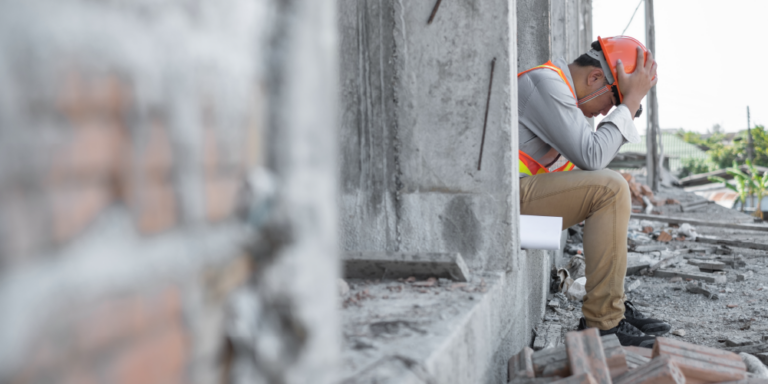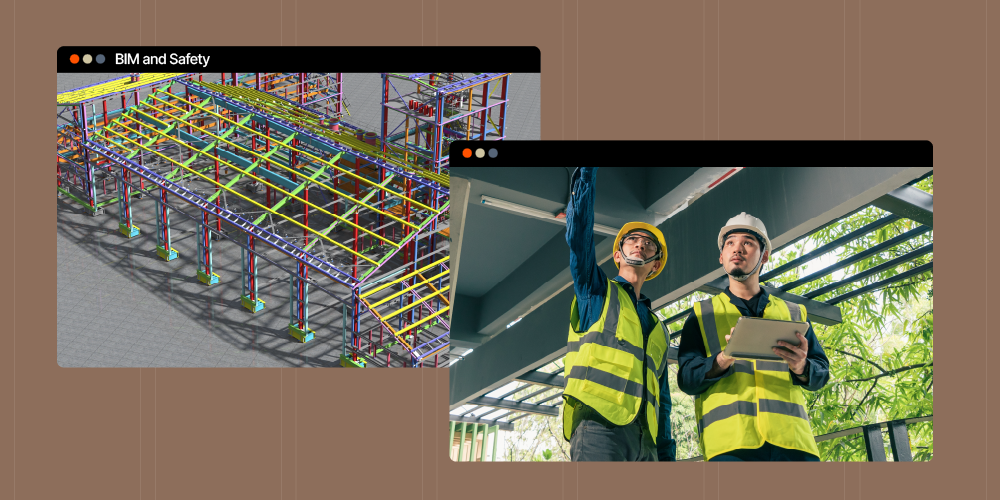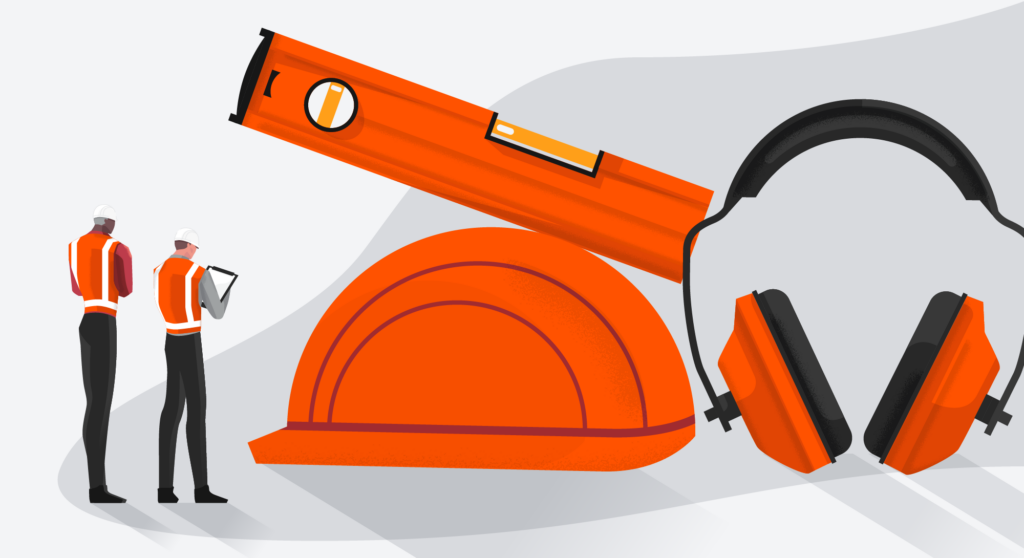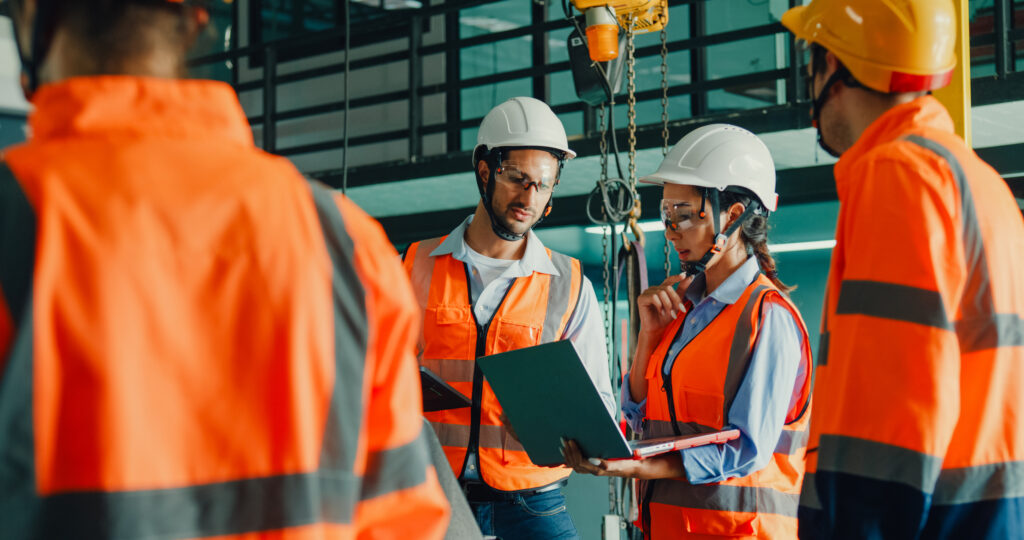— 6 min read
Improving Mental Health in Construction: Resources & Tools
Last Updated Dec 11, 2024
Last Updated Dec 11, 2024

Construction workers face a variety of threats on the job site. Physical hazards, like electrocution, falls and struck-by incidents are some of the most common accidents in construction. Additionally, many construction workers are at an increased risk of experiencing mental health disorders. According to a 2020 report from the Centers for Disease Control (CDC), the construction industry has the second-highest suicide rate out of all major industries in the U.S.
There are several reasons why construction workers are more likely to struggle with their mental health. Construction is a high-stress environment, driven by deadlines and long working hours. Many workers also deal with physical pain and fatigue that can lead to poor emotional well-being over time.
To create a safer work environment, construction companies need to bring awareness to these issues and provide the appropriate mental health resources for their employees.
Table of contents
Mental Health in Construction by the Numbers
Data shows that mental health is a significant concern for workers in the construction industry. A 2020 survey of construction workers found that 14.3% of workers struggled with anxiety and nearly 6% struggled with depression, based on symptoms or medication use. Many workers also reported having worse mental health during the COVID-19 pandemic.
Construction laborers are also at a greater risk of suicide than other professions. According to the CDC, the rate of suicide among male construction workers is four times higher than the general population.
To cope with mental health disorders, some construction workers develop substance abuse problems. One study found that construction workers were significantly more likely to report marijuana, cocaine and non-prescription opioid use in the past month than other workers.
Impacts on mental health in the construction industry
There are a variety of reasons why mental health disorders are so prevalent in the construction industry. Here are some of the biggest factors that may contribute to disorders like depression, anxiety and substance abuse:
Physical Exhaustion
Construction is a labor-intensive job, and it can be physically demanding. When workers suffer from continual exhaustion, it can impact their emotional well-being.
Injuries
Construction workers are more prone to physical injuries than workers in many other occupations. These injuries can be serious and lead to chronic pain, which may affect mental health. If workers are prescribed medication for pain management, it may also increase the risk of substance abuse.
Long Working Hours
It’s common for construction workers to be on the job site for 10 to 12 hours per day, depending on the project. This leaves little time for other activities, like spending time with family, exercising and participating in hobbies.
Seasonal Layoffs
Because construction is seasonal in many areas, it’s common for construction workers to be out of work for a portion of the year. This can cause financial stress which may lead to poor mental health.
Courses about construction.
For construction.
Unlock your career potential with our free educational courses on Health & Safety, Data in Construction, and more.
How to Combat Mental Health Challenges in Construction
Mental health disorders, like depression and anxiety, are extremely common among the general population. However, construction workers are especially susceptible to these issues. There are many steps that construction leadership teams can take to reduce mental health distress among workers and laborers.
1. Know the warning signs.
Construction team leaders need to understand and recognize the warning signs of common mental health disorders. If you can identify these issues early on, it could prevent more serious problems from happening in the future. If someone on your team is exhibiting any of these symptoms, they could be struggling with their mental health:
- Decreased productivity
- Showing up late
- Increased conflict with other team members
- Isolation from coworkers
- Risky behaviors
- Difficulty concentrating
- Extreme mood swings
- Excessive use of drugs or alcohol
Learn more: Tips for Managing Stress in Construction
2. Utilize toolbox talks.
The Occupational Safety and Health Administration (OSHA) publishes monthly Toolbox Talks, which are free training guides that bring awareness to industry issues, like safety hazards and mental health. Toolbox Talks are designed to spark conversation among workers, so it’s important to encourage workers to ask questions and speak about their own experiences during these sessions.
3. Address the stigma.
In the construction industry, workers aren’t always encouraged to talk about mental health or speak out if they need help. With little opportunity for construction workers to discuss their physical and mental health struggles without facing harsh criticism, the stigma attached to vulnerability makes it tougher to have these discussions.
Company leaders and employees who foster judge-free environments will welcome openness from others. Building a positive company culture may encourage employees to disclose any mental health concerns they are dealing with, and receive help before injuries or other potential problems occur.
Additionally, construction company leaders should regularly receive and provide proper training to their staff on mental health.
For example, Procore offers a continuing education course called Health and Wellness of Your Team. The program provides education about the most common mental health issues that workers face, how to identify warning signs of mental health disorders and how to improve emotional well-being.
In a 2021 survey conducted by the Center for Workplace Mental Health, 77% of construction CEOs, presidents and owners said that addressing mental health at work was a priority. While this statistic is promising, construction industry leaders need to continue having conversations around mental health and make it a pillar of employee education to see lasting improvements.
4. Offer robust company benefits.
For construction workers, physical health is just as important as mental health. Your team members should have access to mental health benefits as part of their employee benefits package. This includes access to counseling services, employee assistance programs and a flexible time off policy if workers need to take a day for themselves.
Mental Health Resources for Construction Workers
There are dozens of mental health resources available to construction workers. Company leaders should make sure that workers have access to these tools. They can also be used in mental health training and education meetings.
- Construction Working Minds: This website provides training on mental health and suicide prevention, as well as resources like workplace posters, employee quizzes, grief support and resources for employees experiencing a mental health crisis.
- Construction Industry Alliance for Suicide Prevention: The CIASP provides suicide-prevention resources to construction professionals. There are also a variety of free toolbox talks regarding suicide prevention, substance abuse and workplace safety.
- National Suicide Preventional Hotline: Anyone can receive free and confidential mental health support 24/7 in the U.S. by dialing 988. Counselors are available to chat online or via text. For immediate help, you can also dial 1-800-273-TALK (8255).
- Crisis Text Line: This free service is available 24/7 via text message if you need support for anxiety, depression, suicidal thoughts, or self-harm. You can text HOME to 741741 in the U.S. to speak to a trained crisis counselor.
this is part of the series
Construction Safety Basics
Was this article helpful?
Thank you for your submission.
93%
7%
You voted that this article was . Was this a mistake? If so, change your vote here.
Scroll less, learn more about construction.
Subscribe to The Blueprint, Procore’s construction newsletter, to get content from industry experts delivered straight to your inbox.
By clicking this button, you agree to our Privacy Notice and Terms of Service.
Categories:
Tags:
Written by
Elizabeth Rivelli
12 articles
Elizabeth Rivelli is a freelance writer specializing in insurance and finance. Her writing has been featured in dozens of publications, including Investopedia, The Balance, Forbes, Bankrate, NextAdvisor, and Insurance.com. Elizabeth holds a degree in Communication Studies from Northeastern University. She lives in New England.
View profileJacob Kunken
21 articles
Jake Kunken currently works as Solutions Engineer for Procore's Heavy Civil division. He brings 14 years of experience working in various construction roles in New York and Colorado, including laborer, assistant carpenter, carpenter, assistant superintendent, superintendent, construction manager, safety manager, and project manager. Jake also spent time in EHS as an environmental engineer for Skanska. He’s worked on more than 40 commercial projects from ground-up, to heavy civil, hospital work, and tenant improvement. Jake studied Ecological Technology Design at the University of Maryland.
View profileReviewed by
Sarah Dean
Sarah Dean is a Content Marketing Editor for Procore and has been writing and editing in the construction space since 2020.
Explore more helpful resources

The Strategic Partnership Between Construction Safety and HR
A construction safety manager’s role is significant: It entails broad oversight over the construction workplace to prevent incidents that could cause worker injury or property damage. In addition to this...

Enhancing Construction Safety with BIM Technologies
The construction industry is no stranger to tools: Even ancient civilizations developed mallets and axes to make their work easier. Today’s latest tools look different, but they can be as instrumental...

Construction Safety Training – Goals, Benefits & Emerging Trends
Construction safety training (CST) educates workers about the risks they face on construction sites and teaches them how to prevent accidents, injuries and fatalities. The construction industry has the highest...

Technology for Construction Safety: Strategies to Supercharge and Scale Safety Practices
The construction industry is no stranger to the arrival of new technology, and builders are realizing its many benefits. Modernization across the industry is helping contractors streamline operations, enhance efficiency,...